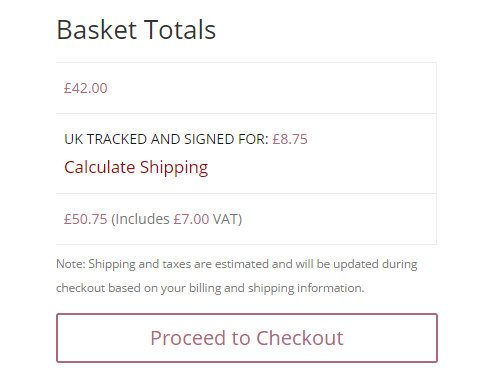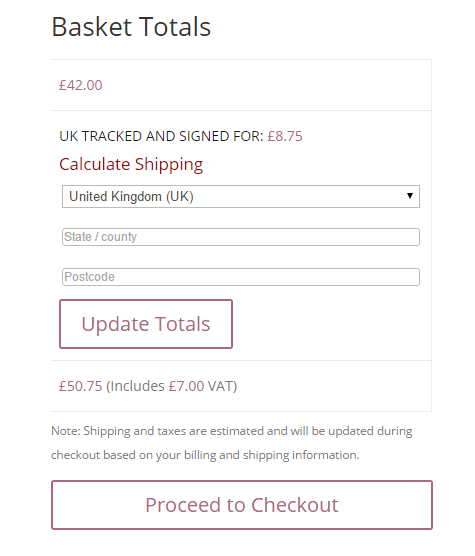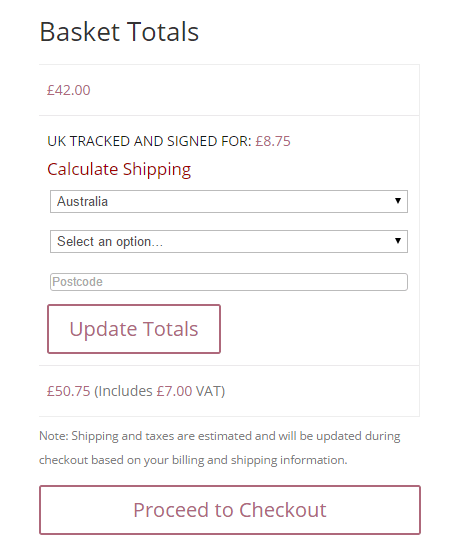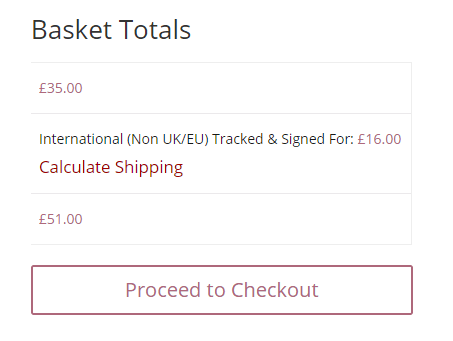Description
Edward I-II Silver Penny.
On his accession in 1272 Edward found the coinage in a poor state due to wear and clipping, an illegal practise which was widespread and carried severe penalties.
For the first seven years of his reign the coinage remained similar in design to those of his predecessor and strangely continued to use the name of Henry. On Edward’s return from the crusades in 1274 he should have embarked on a complete re-coinage. This, however, did not take place until 1279 when new dies were prepared for the penny, halfpenny and farthing and a completely new denomination, the groat of fourpence, a very handsome coin.
Groats are rare and most surviving examples show signs of having been mounted and gilded presumably to be worn on some official regalia.
The minting of named halfpennies and farthings finally did away with the practise of cutting pennies into halves and quarters to facilitate the giving of change.
To speed up the production of these new coins, Mints were set up in several towns and cities, and the reverse of the coins stated the place of issue, i.e. CIVITAS LONDON (City of London) or VILL NOVCASTRI (Town of Newcastle).
The obverses or “head” side displays a far superior portrait with realistic curls and an ornamental crown. The penny carries the titles (abbreviated) which read ‘Edwardus Rex Anglorium Dominius Hiberiae’ (Edward King of the English, Lord of Ireland).
The pennies were a tremendous improvement over those of Edward’s predecessor and they set the standard and design for the next two centuries. They were in fact copied extensively by a number of the feudal states in Europe. Many of these imitations were brought over and circulated in this country despite several attempts to prevent their importation.
This penny struck at the Bigbury Mint in sterling silver closely resembles Type 1 in Seaby’s Standard Catalogue of English Coins.
This excellent quality, semi-reproduction coin is struck in our Devon workshop.



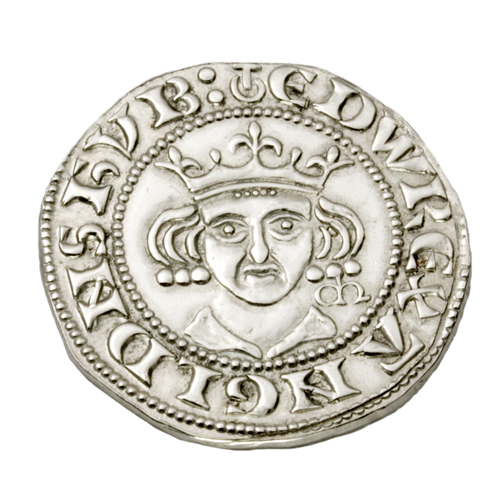
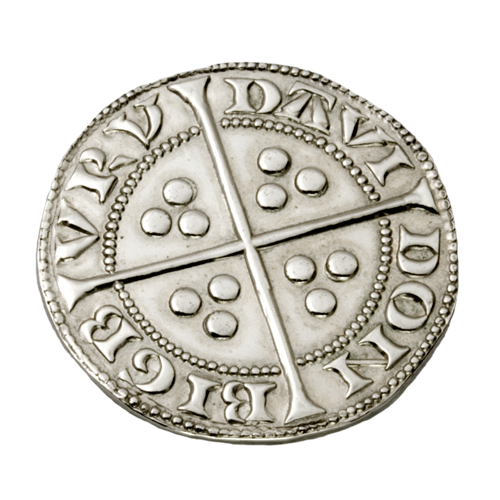
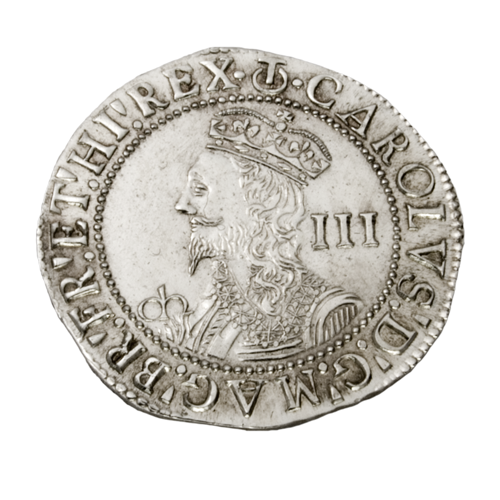
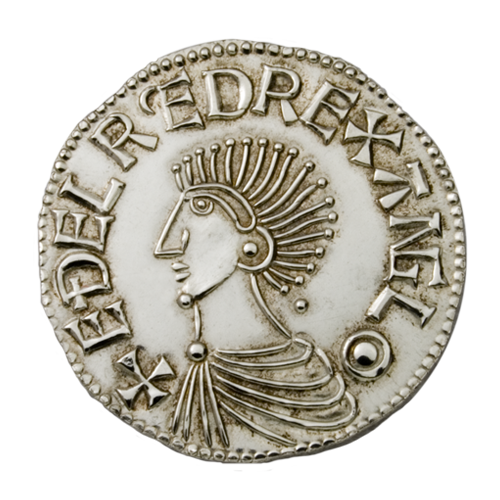
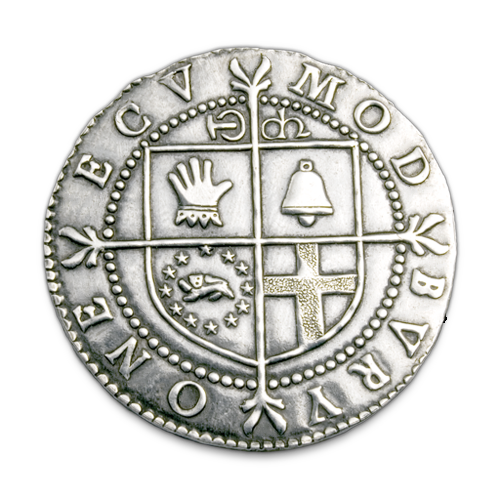
 Medal mounting swing style is the more traditional method of mounting medals. Swing Style or ordinary style mounted medals are mounted on a medal brooch bar which can then be pinned to your tunic directly, through becketts or attached to a pocket holder. This style of medal mounting allows the medals to move or ‘swing’ when worn. Over time, the edge of the medals can become damaged due to the medals “clinking” together.
Medal mounting swing style is the more traditional method of mounting medals. Swing Style or ordinary style mounted medals are mounted on a medal brooch bar which can then be pinned to your tunic directly, through becketts or attached to a pocket holder. This style of medal mounting allows the medals to move or ‘swing’ when worn. Over time, the edge of the medals can become damaged due to the medals “clinking” together.
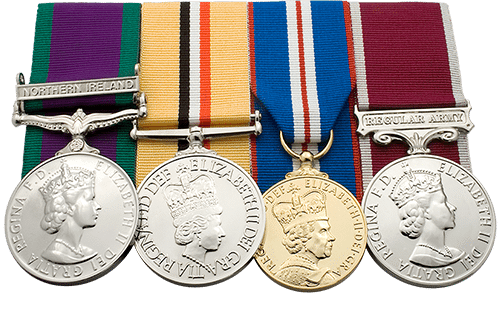 Medal mounting court style is alleged to have began during the reign of Queen Victoria. Those attending the Queen would wear medals court mounted to stop them “clinking”. Other sources suggest that the Cavalry first adopted the practice. Either way, this style of medal mounting is becoming more popular. Court mounted medals are fixed to a rigid backing material called buckram. The buckram is then covered in a felt material before the medals are mounted on their own ribbon length. This style of medal mounting holds the medals firmly in place and prevents them ‘clinking’ together and damaging each other when worn.
Medal mounting court style is alleged to have began during the reign of Queen Victoria. Those attending the Queen would wear medals court mounted to stop them “clinking”. Other sources suggest that the Cavalry first adopted the practice. Either way, this style of medal mounting is becoming more popular. Court mounted medals are fixed to a rigid backing material called buckram. The buckram is then covered in a felt material before the medals are mounted on their own ribbon length. This style of medal mounting holds the medals firmly in place and prevents them ‘clinking’ together and damaging each other when worn.
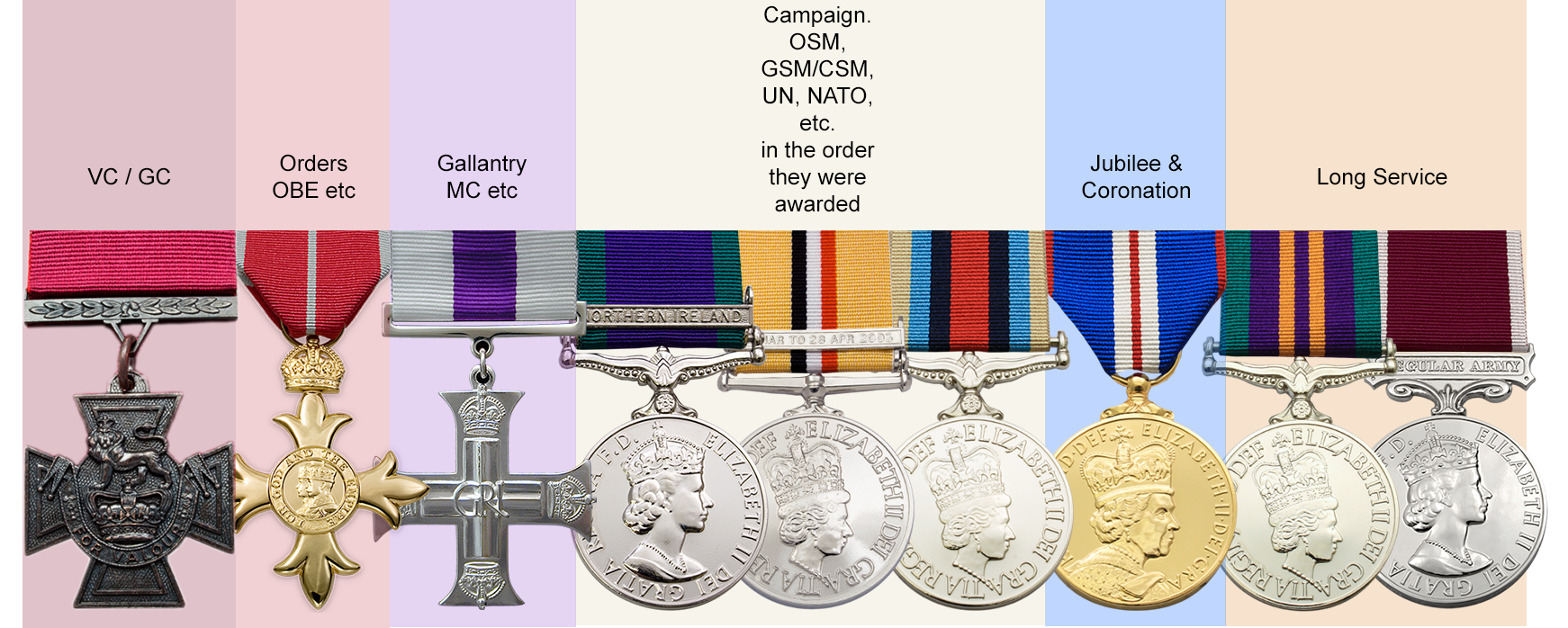
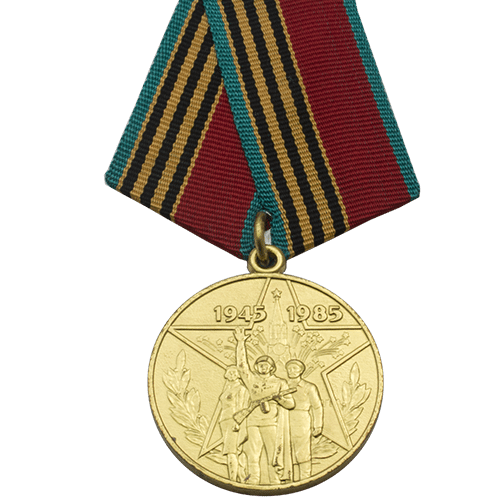
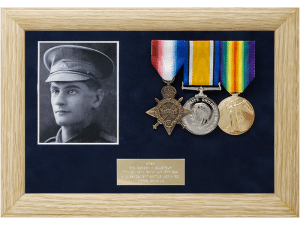 Medals are mounted ready for wear and then placed on a block within the frame. This allows for the easy removal and replacement of the medals as required, meaning they can be removed for wear on parade or for cleaning.
Medals are mounted ready for wear and then placed on a block within the frame. This allows for the easy removal and replacement of the medals as required, meaning they can be removed for wear on parade or for cleaning.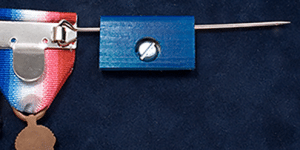 The medals will hang from the block at a slight angle much as they would if they were being worn on the chest.
The medals will hang from the block at a slight angle much as they would if they were being worn on the chest.
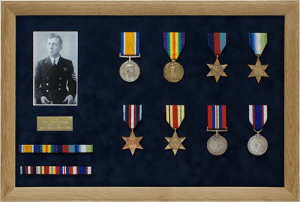 Medals are not mounted ready for wear and instead are placed flat against the frame backing with the medal ribbon secured through a slot. This means that the medals cannot be removed from the frame and cannot be worn.
Medals are not mounted ready for wear and instead are placed flat against the frame backing with the medal ribbon secured through a slot. This means that the medals cannot be removed from the frame and cannot be worn.

